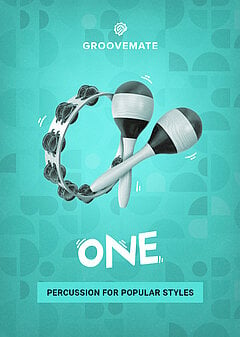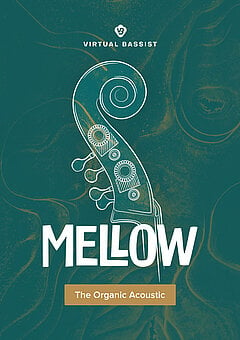The Ultimate Guide to Small Combo Jazz
Everything you need to know to start writing and producing modern jazz with live players or virtual instruments.
MAY 30TH, 2021
If you’re creating jazz as a music producer, there’s a good chance you’re looking to blend it into other genres. R&B is a great candidate for this, but you can even add jazz to EDM, rap, dubstep, or anything your heart desires. This gives you the perfect opportunity to add new harmonies, writing styles, odd time signatures, and mockup realism techniques. You’ll discover all of these here, along with everything you need to get started!
- Instruments in small combo jazz
- Writing for jazz
- Dealing with odd time signatures
- Realism with solo virtual wind instruments
- Conclusions
That said, you could certainly create a full jazz song just from virtual instruments ... but sometimes, it’s simply best to leave soloing to live musicians! Let’s take a look at what instruments you’ll commonly use when writing jazz, specifically for the small combo style popularized as the big band era began to fade.
Instruments in small combo jazz
The standard jazz combo arrangement hasn’t changed much in the last few decades. Any type of saxophone is fair game (baritone, tenor, alto, soprano, etc.), as are trombone, trumpet (plus flugelhorn and cornet) and rhythm section (a term you’ll hear thrown around a ton in the jazz world meaning piano and / or guitar, bass and drum set). Aside from the rhythm section, there are no rules about which instruments must be included, so have fun with the arrangement, making it as dense or as sparse as you like. Of course, you can include any other instruments you like and set your music apart from the crowd, but this is a safe starting point every time.
Woodwinds and brass are a ton of fun to work with, and writing jazz can be a welcome opportunity for producers since it’s less open-ended given its limited instrumentation. Rather than layering a bunch of instruments and synths together, you’re finding one musician or virtual instrument per instrument and highlighting its unique qualities. With so many different solo instruments, jazz musicians often have to compete for space and know when to stand back and let other instruments shine. When producing jazz, make sure to give individual attention to each instrument at different times. Don’t let any instrument feel left out!
The role of the rhythm section is quite different; it has one primary job: to lock in the beat so the wind instruments can fall into line. This comes long before chord progressions, because it’s the foundation on which everything else is built! Everything in the rhythm section references back to the drums, then the winds reference back to the rhythm section as a whole for both rhythm and chords. Once you have those locked in, feel free to start improvising: the heart of all jazz!
Writing for jazz
If you’re not already deeply familiar with jazz, it requires a different approach than any other genre. Jazz harmony and chords revolve around the notion of chord extensions, which are essentially extra notes that get tagged onto seventh chords. Here’s an excellent guide from Learn Jazz Standards that touches on nearly everything you need to know in order to begin writing.
One of the most fun parts of jazz is writing walking basslines — if you’re struggling with it however, try out Virtual Bassist MELLOW 2, which is by far the quickest way to create snappy walking basslines in moments. Check out this video that dives into how you can create a walking bassline for nearly any jazz combo song:
In most jazz combo songs, there’s a melody portion that’s often quite short, played over a set of chord changes which the wind players will also use for soloing. This idea of improvising off of a basic song structure is deeply rooted in jazz tradition, and typically extends a song to many times its natural length. Musicians use this extra time to explore and riff off of the musical ideas of the song, other songs and most importantly their own musical sensibilities. There are too many great examples to count, and it probably comes as no surprise that some of the best musicians to study are artists like John Coltrane, Miles Davis and Herbie Hancock, amongst many others.
Now, if you’re sequencing jazz with virtual instruments, you’re probably not looking to create an authentic small combo performance with mostly solos; rather, you want to use this style and adapt it to your needs. If so, good — to create convincing solos with virtual instruments is a monumental enough task to make any producer go pale! Still, it’s helpful to understand these origins so you can emulate them however you choose.
Dealing with odd time signatures
John Coltrane’s classic song Afro-Blue, a jazz waltz in 12/8. Dave Brubeck, famous for writing the 5/4 tune Take Five. And Pat Metheny won a Grammy for First Circle, written in 22/8. Jazz musicians don’t just push the boundaries of harmony — mainly toy with rhythm as if it was no object. While you don’t need to get this wild, doing so can set you apart and add a lot of interest to your style when done well. But without a guide, these meters are insanely tough to count.
The simplest way to make sense of them is to break them down into sub-groups of beats in 2, 3 and 4. For example, 5/4 could be 2 beats then 3, or 3 beats followed by 2. 7/4 might be 3 then 4. 12/8 is usually 4 groups of 3, which actually feels a lot like 4/4. Changing these groupings can radically change the feel of a song — and while there’s no right or wrong, it’s likely one will feel more ‘right’ while you’re writing.
If you want your songs to be as easy to digest as possible, you should probably use a ‘normal’ time signature; however, if you’re down to experiment and your listeners are receptive to it, use odd time signatures as freely as you like! Something to note, however: deliberately introducing oddities into your music, whether through harmony, rhythm, or any other aspect, gives people something to talk about. If you can masterfully use odd time signatures, your listeners may attempt to analyze your music and figure out what you did and why — even if there’s no rhyme or reason behind it!
Realism with solo virtual wind instruments
If you’re unable to record your jazz songs live, that means turning to virtual instruments — but getting solo wind instruments to sound realistic is quite the challenge. Percussive instruments like piano and drums are fairly straightforward, but wind instruments have a sustained sound that will sound fake unless carefully manipulated. Let’s check out a couple of techniques for achieving realism with virtual wind instruments.
Firstly, pre-fader level adjustment: this implies it must come before the track’s volume fader. This is key so that you can still freely automate the track volume as needed. You can also add a level adjustment utility plugin to the chain immediately after the virtual instrument (this order is VERY important!). Record the melody as you normally would, then automate the level with either the mouse or a breath controller, making sure to use as many points as possible in the curve. Be slightly chaotic and draw rapidly if using the mouse, but keep it within a 3dB range or so; you can be more dramatic when approaching note ends to create a tapering effect.
Listen with the level adjustment both on and bypassed and see if you can tell a subtle difference — you’ll know when you’ve nailed this, because it will sound better ... but you won’t quite be able to articulate why! You’re essentially simulating the instrument moving in relation to the microphone in real life, and somehow the instrument just sounds more alive. This technique alone will instantly make your virtual instrument sequences sound so much better! One important note: this is in addition to, not instead of, using the mod wheel or expression (CC #11) on the instrument for broader volume control. The effect we’ve described is just a little icing on the cake.
Humanizing the instrument in any way you can is incredibly valuable — you could do something similar with pitch, although you would need to be much subtler so the instrument doesn’t sound out of tune. Vary note velocities as well, and make sure that most notes don’t line up perfectly with the grid.
One other super simple tactic is to start every overlapping note a little early, because virtual instrument “legato” notes tend to come at a delay. You’ll obtain greater realism merely playing with the note start until it sounds like it starts right on the beat. This is particularly valuable with ensemble instruments, but solo instruments can greatly benefit from it as well!
Wrapping up
Jazz presents a unique set of challenges, especially if you come from writing in hyper-compressed and heavily polished genres. It’s loose, free and needs room to breathe, and it’s extremely easy to overdo nearly any effect. Balance and careful instrument taming are the name of the game, and it’s difficult for a lot of producers to let go of some control and give it back to the instruments.
But following such a different approach can make you a better producer of EDM, R&B, or any other genre, because appreciating both extremes allows you more flexibility in every creative endeavor moving forward. Ultimately, jazz is one of the best playgrounds for experimentation and idea generation — be creative and take musical risks. Listen to small jazz combo songs from every era, and you’ll learn a ton of lessons you can bring to every song you write!
Stay up to date
Sign up and we’ll send you an e-mail with product news and helpful stuff every now and then. You may unsubscribe at any time.
Defy Limits
We develop software solutions that enable people to create, consume and interact with music.



